Members of Gov. Josh Stein’s Task Force on Child Care and Early Education got a peek inside child care programs’ budgets at the group’s third meeting Monday.
The task force’s first report, with recommendations on how the state should expand access to high-quality, affordable child care, is due to the governor’s office at the end of June.
“Both access and affordability are directly related to the budgets that providers operate within,” Neil Harrington, research director at nonprofit NC Child, said in a presentation to the group.
Sign up for Early Bird, our newsletter on all things early childhood.
Members were tasked with balancing the budget of a mock center in order to raise teacher pay from $15 an hour to $17 an hour. In North Carolina, the average hourly wage for child care workers was $14.20 in May 2023. The average annual price for families for center-based infant care was $12,251.
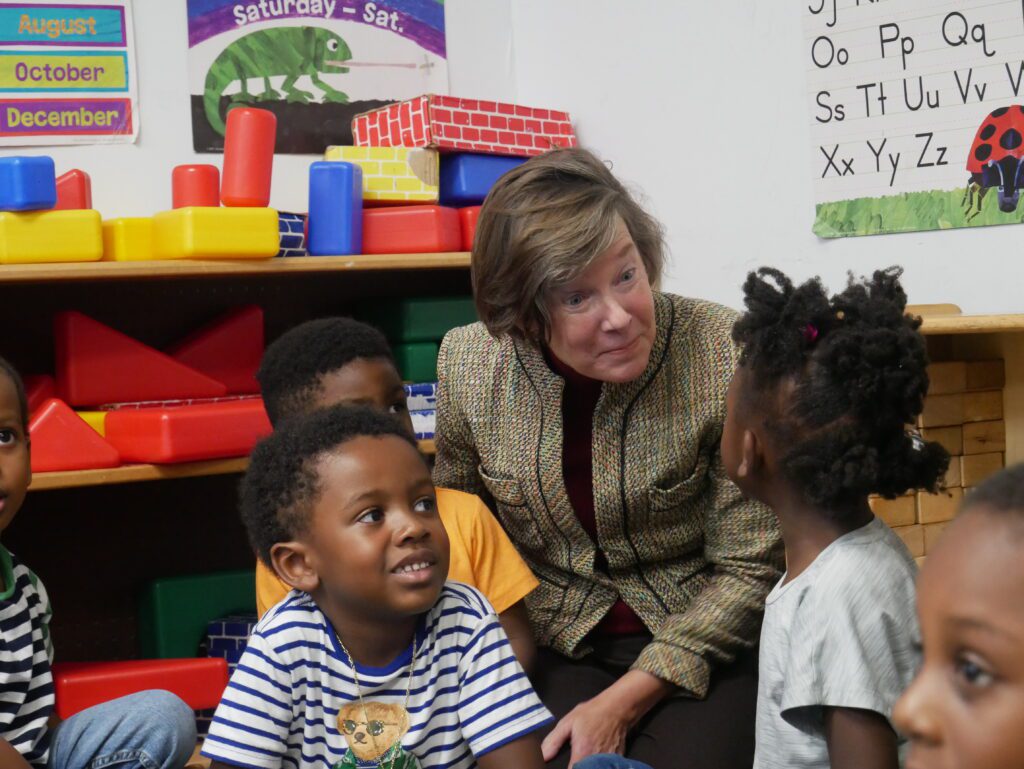
Task force members threw out suggestions: Cut the director’s salary, increase class sizes, renegotiate rent, gradually increase tuition.
“We really landed on: The center needs more help, and where is that help going to come from,” said Meka Sales, task force member and director of special initiatives at The Duke Endowment.
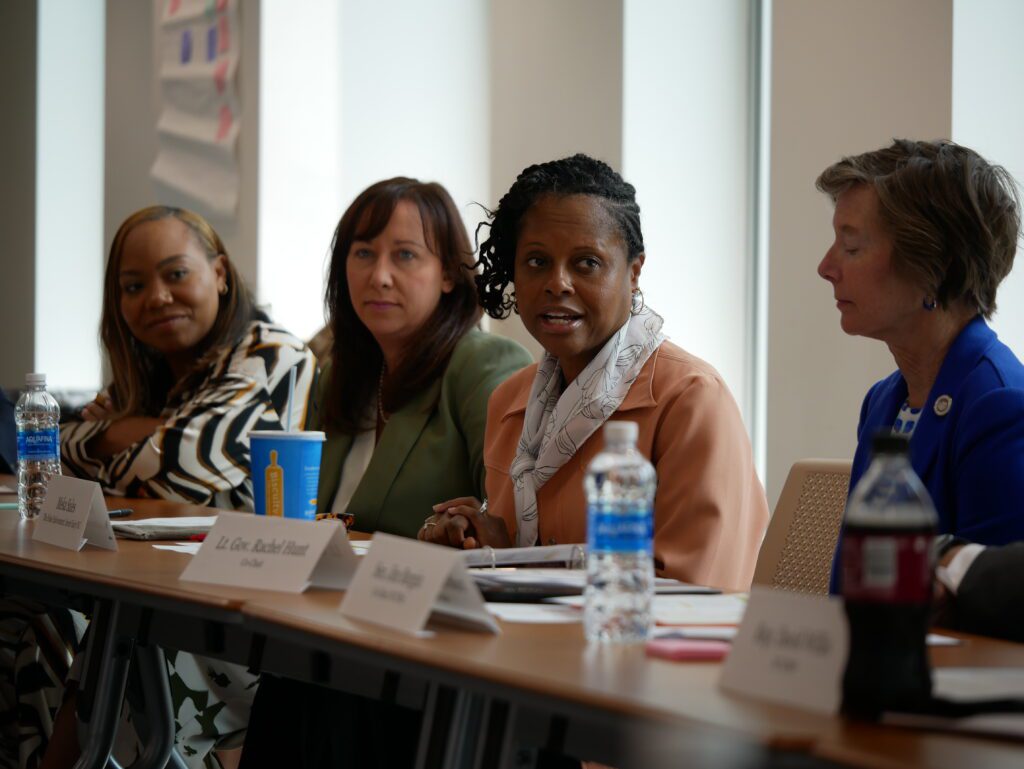
Rep. David Willis, R-Union, a task force member, is the former owner and operator of a child care program in Charlotte. He explained why supply is unable to meet demand.
“When you think about businesses in general, you can sell more product; there’s more services, or build more widgets,” Willis said. “With child care, once those seats are full, you’re full. The only lever you have are costs or tuition, and we’re at kind of a breaking point of both of those. And so what’s left? And how do we get creative? And that’s the challenge that we have.”
Harrington and Leanna Martin, NC Child’s early childhood education policy analyst, further broke down the budgets of child care programs from interviews with a handful of providers across the state.
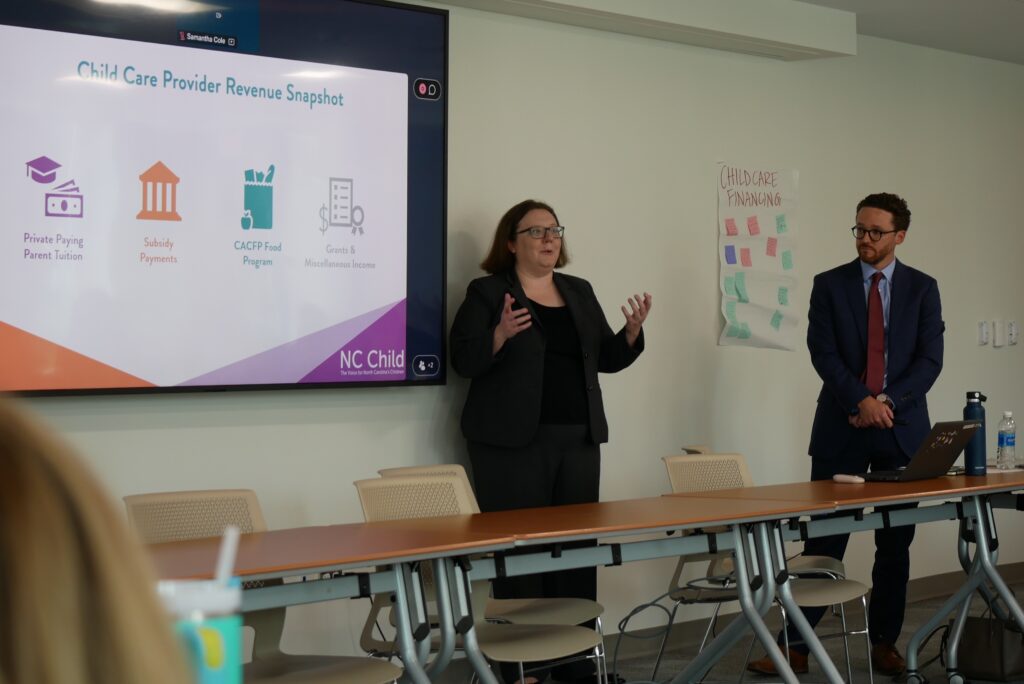
They found programs’ main revenue sources are private tuition, payments from the subsidy program, the federal Child and Adult Care Food Program, and other grants. Private tuition made up 66% to 98% of the three budgets they showed.
“Tuition does not cover the true cost of care,” Martin said.
They shared three examples of types of programs they have studied — a for-profit center in Mecklenburg County, a nonprofit center in Alamance County, and a for-profit family child care home in Cleveland County.

Programs’ main costs were staffing (which made up 55% to 80% of expenses in the budgets they have studied), facilities, programming, and administrative costs.
“There’s this balancing act — how much can we raise the rates without breaking the budgets of the families we’re serving?” Martin said.
In the case of the family child care home, there were no staff expenses because the operator does not set aside a salary for herself, a common practice in family child care.

The profit margins of the budgets they outlined ranged from -0.07% at a family child care home in Cleveland County to 14% at a for-profit center in Mecklenburg. A healthy profit margin across industries is about 20%, Harrington said.

“The margin is so small — it’s so, so small,” said Beth Messersmith, task force member and campaign director for MomsRising’s North Carolina chapter. “It’s a disincentive to go into it. But also … it seems very possible that one emergency could wipe the center out and create that ripple effect through all those families.”
Harrington and Martin said that outside resources like pandemic-era compensation grants have been big helps to programs. In the case of the Cleveland County family child care home, the provider will be receiving $9,000 less per year now that those grants have ended. The provider said they had a second job on top of running the program.
“Without that second job, they would basically be on every public assistance program,” Harrington said.
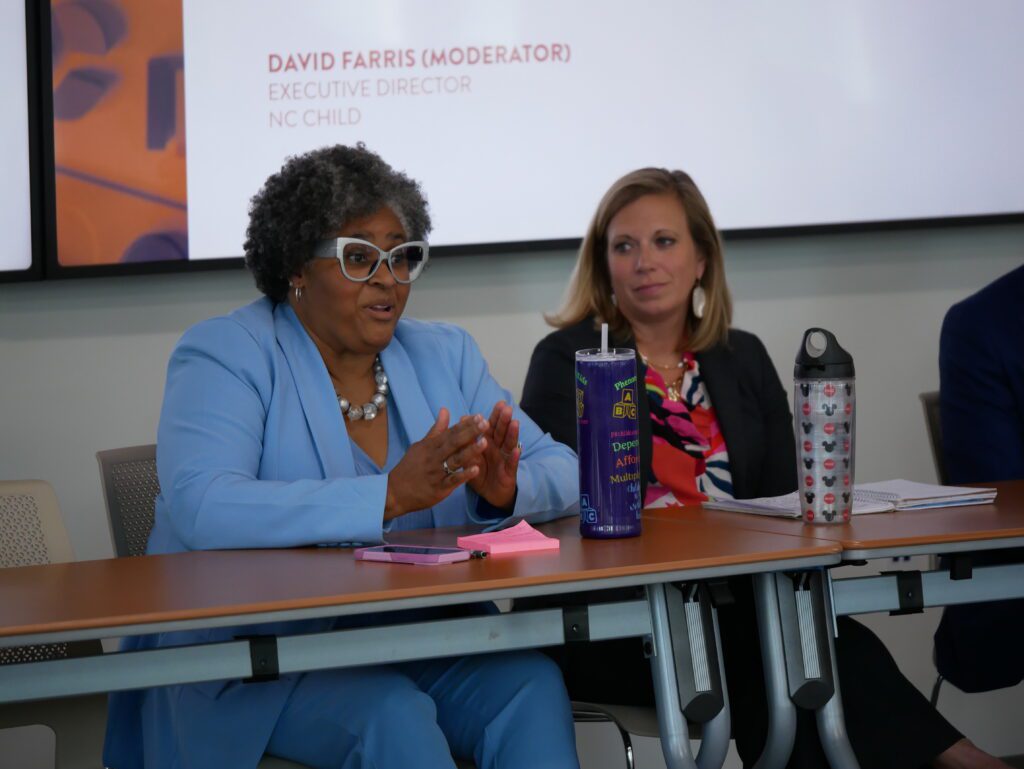
Members voted on recommendations to include in the group’s interim report due by the end of June. Here were the most popular proposals:
- Create a statewide floor for child care subsidy reimbursement rates.
- Explore partnerships with North Carolina community colleges and K-12 school systems to increase access to child care for public employees, and explore the use of underutilized public property for child care.
- Link existing services into a continuum of training and support for the early care and education workforce, such as Child Care Academies, Building Bright Futures, the WAGE$ program, and TEACH scholarships.
- Explore subsidized or free child care for child care workers, potentially through subsidy eligibility.
- Develop approaches to offer non-salary benefits to child care professionals, such as making child care workers eligible for the state health plan.
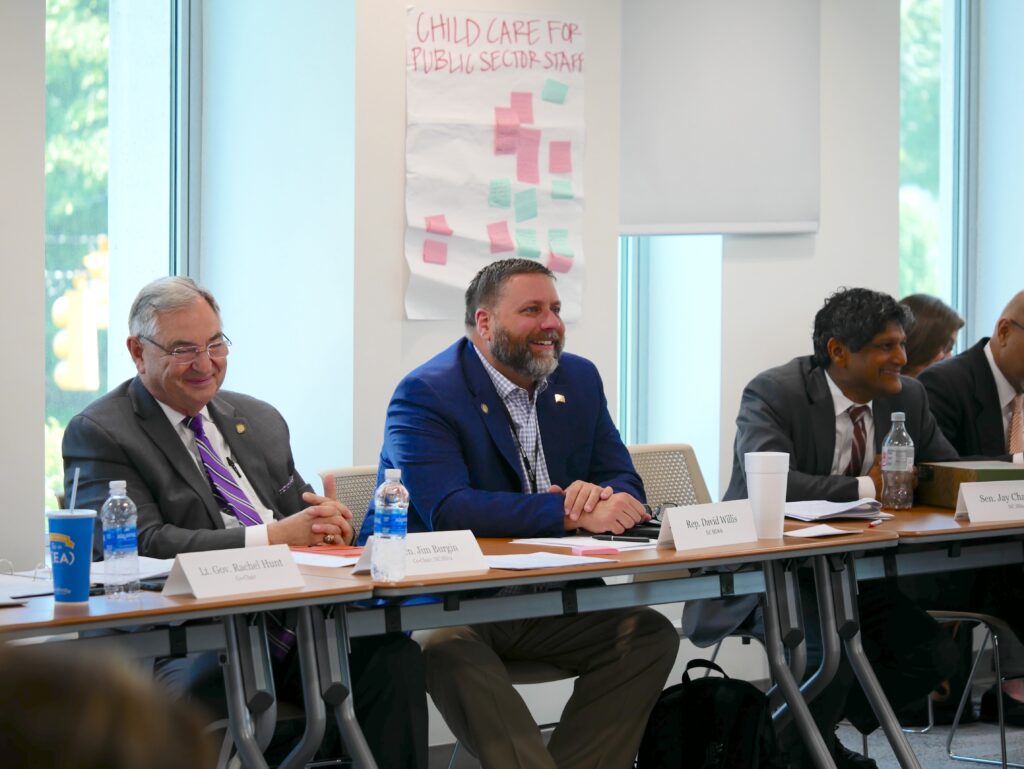
Meanwhile, the legislature is in session developing its two-year state budget. Both the House and Senate proposals have additional funding (through a mix of state and federal dollars) for the child care subsidy program, but do not include a floor rate, which would help providers in rural and low-income counties sustain programs. The subsidy floor rate is both the task force’s most popular proposal and the top priority of several advocacy groups.
Next, the House and Senate will negotiate to reach a compromise budget. Task force members in Monday’s meeting said child care solutions should include contributions from multiple entities, including state government, employers, and philanthropic funders. Multiple members brought up the idea of creating an endowment fund to collect funding from multiple partners that would grow on its own.

Willis said he is hoping to see both the floor and funding to cover child care costs for child care teachers in the budget.
State leaders’ attention to child care, he said, “is long overdue.”
“I think we’re finally realizing that this is a different beast of its own, and we’ve got to think of it differently,” Willis said.





